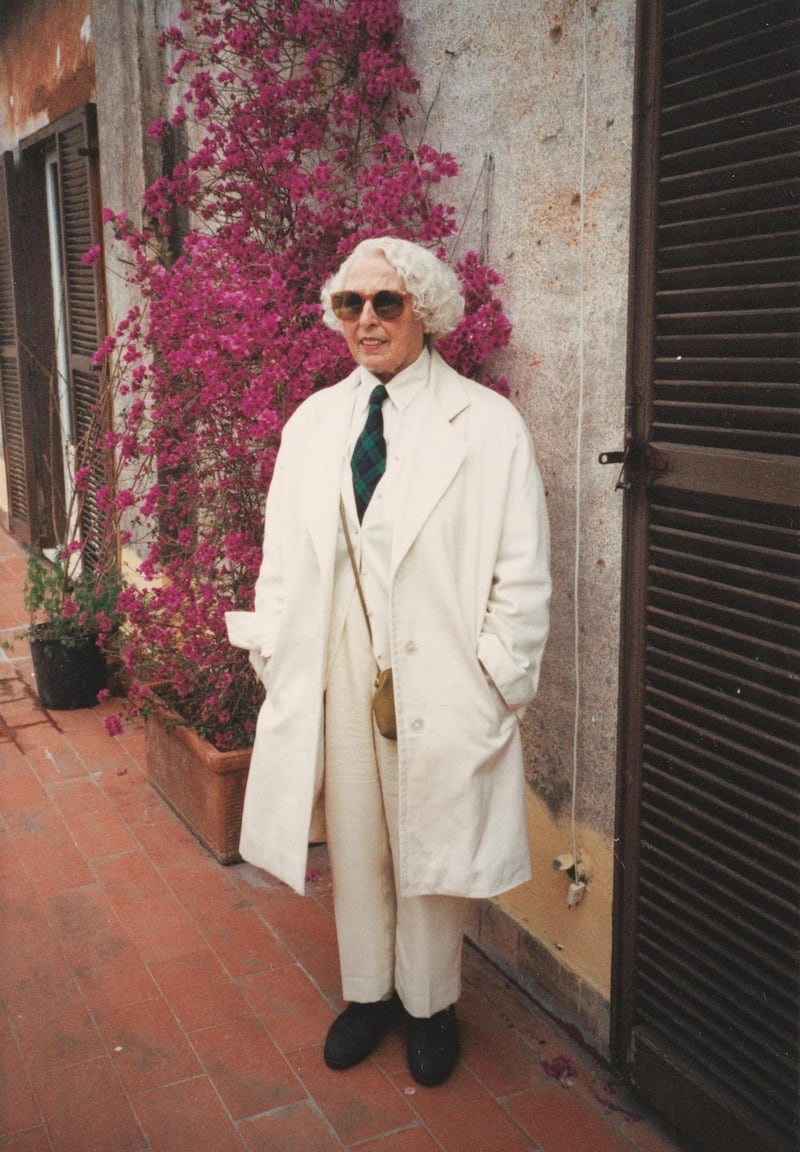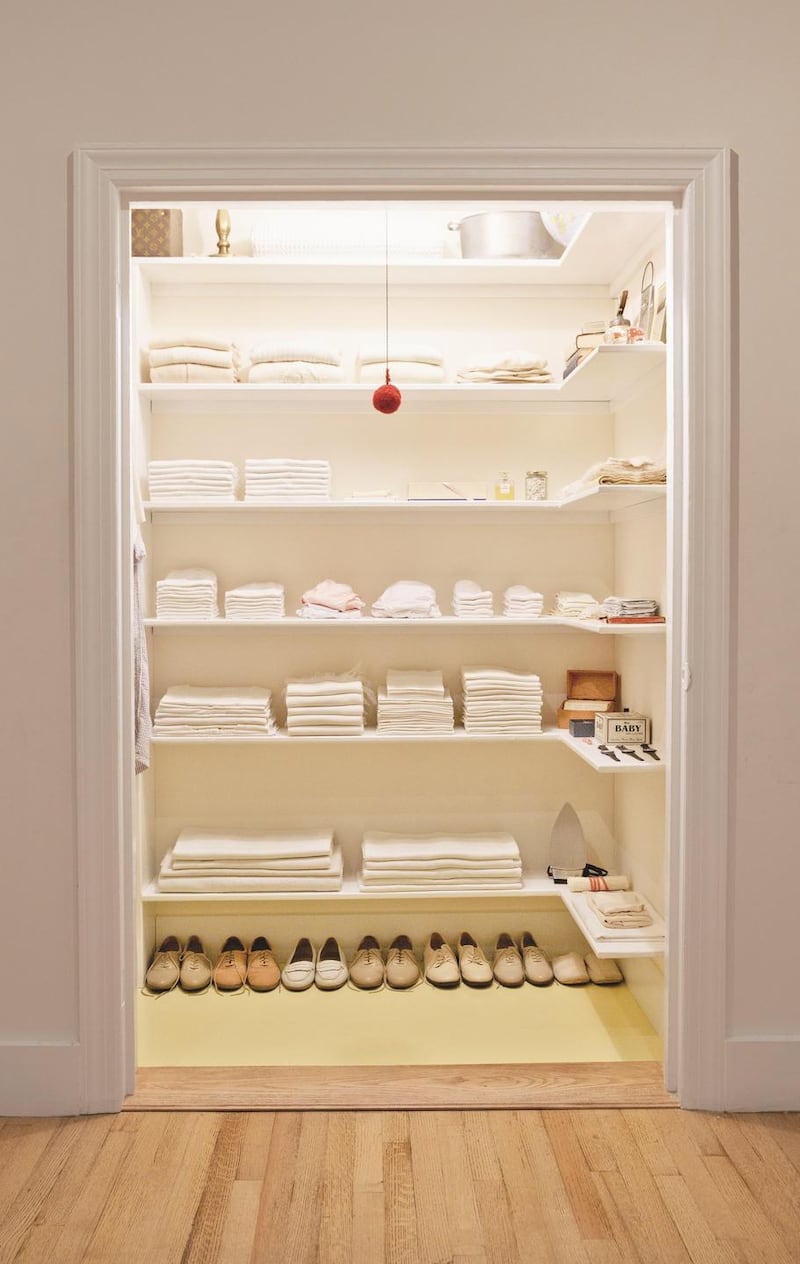Celebrated New York based writer, designer and illustrator Maira Kalman has an expected passion – ironing – which she describes as a form of meditation. "The slowness. The time. The warmth of the iron. The steam. Smoothing out the wrinkles from linen. Folding. Folding is adored," she once told a magazine. She is known for her bestselling children's books, her New Yorker covers, her ballets and her irreverence, but that love of ironing, inherited from her late mother Sara Berman ( the subject of her latest book), is something she takes seriously– so seriously, in fact, that she once spent a fortnight on the job in Lismore Castle in Waterford.
"I am to the manor born," she confesses on the phone from New York, "but downstairs rather than upstairs." A love of grand houses and their gardens is deeply ingrained in her, and when she expressed a desire to work for the Duchess of Devonshire, a friend organised an introduction to the duchess's grandson William Burlington, the present proprietor of Lismore Castle.
“He was lovely and said come on over,” she recalls. “So I spent a fortnight there some years ago in the spring and they gave me an old butler’s room and I made beds, polished the silver, did vacuuming and then the ironing. It was a completely beautiful experience and I was very grateful to him. Most of the ironing was table linen, a million table napkins from all the meals, all those rectangles! I strolled around the gardens and wrote in my journal, but I didn’t do any drawings,” she says, adding casually that she then moved on to stay in Ballymaloe House – though not for the ironing.
Extraordinary wardrobe
Kalman and her son Alex are the authors of a new pictorial and narrative memoir called Sara Berman's Closet which celebrates the contents of Kalman's mother's extraordinary wardrobe. Berman, originally born in Belarus, was a Jewish emigre who moved to the Bronx from Israel with her husband and two daughters in the early 1950s and later moved back to Israel with her husband, a diamond dealer. In a momentous move at the age of 60, after 38 years of marriage, she packed a single suitcase, walked out on him and moved back to New York to begin a new life in a small apartment in Greenwich Village. "She had a nervous breakdown and the only solution was to leave," explains Kalman. "We had to abandon my father to save my mother."

In a further burst of personal expression, Berman decided to wear only white. Her way of creating a beautiful space around her with warmth, precision and frugality became like a work of art. When she died at 84, her family decided to preserve the contents of her pristine, exceedingly organised closet of white clothes, and later Alex Kalman exhibited the closet in his Mmuseumm of everyday objects in Tribeca, where people from all over the world showed up to view it. Berman's story, told through her clothes, resonated with viewers.
My mother loved the cultural life of New York and that world was opened up to us
Berman ironed and folded everything – even her underwear and socks. “What I learned from her was an appreciation of my surroundings, of small moments that make up the bigger picture and the way you care for the home,” says Alex Kalman. “From day one I grew up in household in which the language of the home was looking and noticing – looking at objects not at their design, but what idea or emotions those objects reveal to us. It is not about sentimentality but what those objects represent at a human level.”
Freestanding monument
The closet – with its perfectly pressed bras and shirts – went on to the Metropolitan Museum of Art, where it was exhibited in the American wing for six months, and from there to Los Angeles. It continues to travel – it will be erected next year as a freestanding monument in Independence Plaza in Philadelphia, where the US Declaration of Independence was signed, "and instead of a man on a horse it will be Sara Berman," says Alex. Further plans include bringing it to London.
Maira reflects on her family background. “My sister Kika (an artist and interior designer who makes hats for Comme des Garçons) and I come from a family where the girls didn’t go to university, didn’t have careers, but worked as home makers. We were both able to find our way as artists as my mother loved the cultural life of New York and that world was opened up to us,” she explains. Her mother’s early life growing up in a little village, one of six children “who cleaned and polished, cooked and baked, washed and starched and ironed and sewed”, is beautifully illustrated with Maira’s drawings and family photographs.

The sense of order continues down the family line. Alex remembers his grandmother ironing on a dining table, “a child height wooden table with school chairs for eating meals, and she would lay a towel on the table and iron on that. She was particular but not in a showy way,” he adds.
“We are all rather tidy,” Maira concurs. “In New York I have an ironing board. In Israel I work on the kitchen table and it brings me back to another life. I polish silver. I love routine and ritual and every Friday I put the house in order.”
She is working on a new children's book called Bold and Brave, about women who fought for the right to vote, and providing 70 paintings for a new edition of the Alice B Toklas cookbook as well as developing another ballet. And she continues to do the ironing.
Sara Berman's Closet by Maira Kalman and Alex Kalman is published by HarperCollins on December 13th £20.











